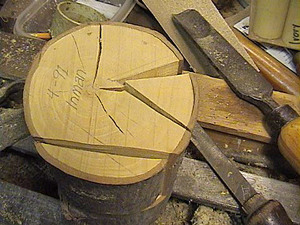
Are there any authoritative references to resolving problems related to expansion and contraction of wood in projects? I made a grandfather clock from solid cherry for my daughter. It held up well for five years when she lived in Virginia. She moved to Wisconsin, where the winters are colder and the house is obviously drier in the wintertime, and I am seeing cracks in the wood as it contracts. I checked the moisture content in the wood before using it in the project (10 to 11%) and glued up wider sections from narrower stock, and sealed it inside and out, but it still split in the drier environment. I have two more to build, but I don’t want to start until I can find some answers.
Rick White: Probably one of the hardest things there is, is to figure out the movement of the wood, and then you add moving from one humidity to another. Ten to 12 percent humidity is too wet for me. I want to be in the six to eight percent range. So it might help if you start off with wood dried to a lower moisture content.
You will also want to be sure to use the quartered side of the board when you are gluing up to make wider pieces. You want the narrower grain pattern in the quartersawn wood, and narrow pieces. This could eliminate your problem.
Rob Johnstone: I’m with Rick on this one. The wood was a bit too moist when you built the clock. If you had made accommodations for that movement via your joinery, it might have worked, but now you are in for trouble. When this sort of thing happens to my projects, I try to pass the checking and cracks off as beauty marks & but it seldom works.





